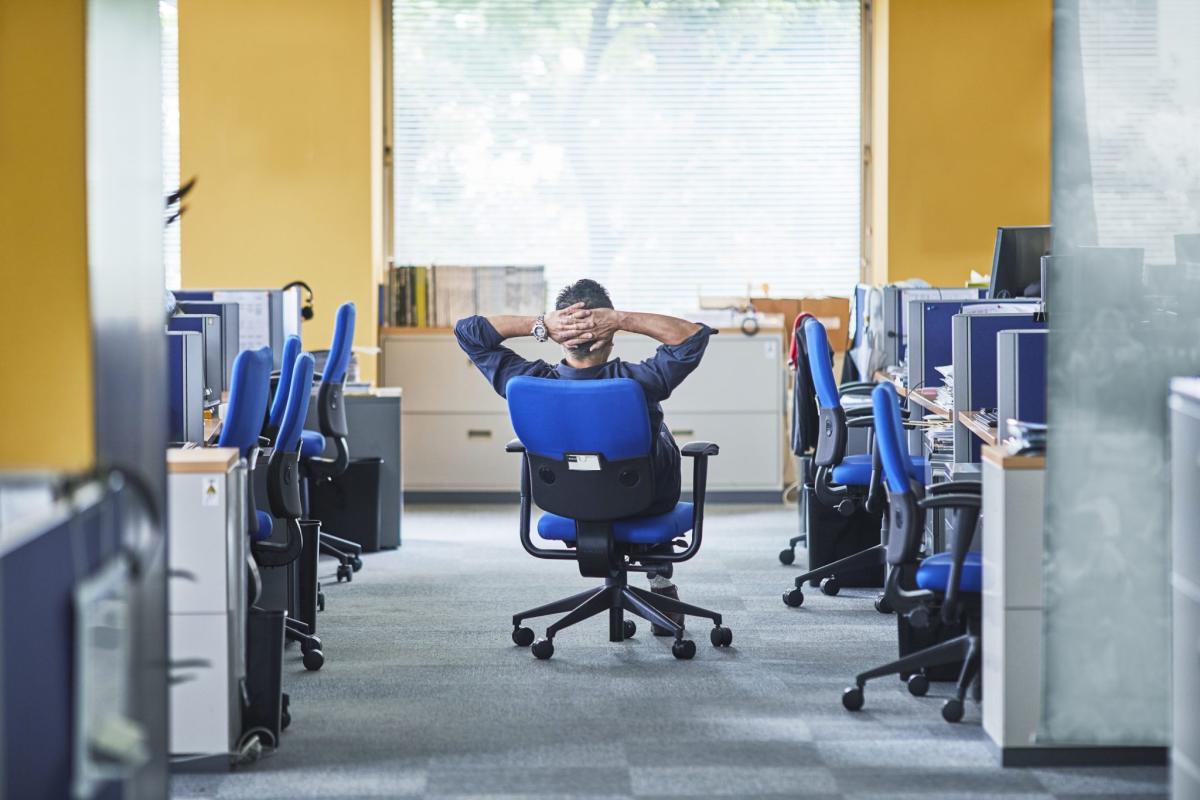
Despite mass mandates for workers to return to the old way of working—in an office from 9 a.m. to 5 p.m.—bosses aren’t having any luck keeping people at their desks until the end of the day.
After over three years of working when they are most productive, instead of during set hours, workers are still clocking off work earlier to run errands; the result is a “dead zone” in the workplace from 4 p.m. to 6 p.m., managers told the Wall Street Journal.
It's easy to see why workers are keen to keep up the COVID-era habit, which can promote work-life balance.
Those with families are using that time to do the school pickup, run errands, and have dinner on the table in less of a hurry. Meanwhile, others are finding time for leisure before work depletes them of their energy and capacity for fun—by 4 p.m. on weekdays, golf courses are packed, according to a Stanford University study.
Plus employees aren’t dodging work to kick their feet up for the rest of the day. They’re logging back in on their laptops after hours to finish their work.
The result is a "triple-peak" day, in which workers’ keyboard activity spikes in the morning and afternoon, then a third time around 10 p.m. Microsoft researchers who coined the phenomenon predict the pattern is here to stay.
But for bosses, the notable silence in the late afternoon paired with the third late shift is making the work day unbearably long and tedious.
The big risk of working fluidly
While many workers will experience the benefits of flexible hours, there are downsides too—namely that the boundary between “office hours” and everything else has become thinner.
“The third peak should be an available option for people who need it, but the challenge moving forward is, ‘How can we make sure people are not working 24/7?’” Shamsi Iqbal, principal researcher on productivity and intelligence at Microsoft Research, said in the report. “If people are working all three peaks, that’s a recipe for early burnout.”
Plus, for those working with or managing people who work all hours, the workday can feel never-ending.
Without a defined nine-to-five workday, Albert Fong, vice president of product marketing at Kanarys, told the WSJ, he often finds himself refreshing his mobile inbox all evening or opening his laptop on Sunday to catch up on messages from colleagues who work whenever.
Meanwhile, struggling to find a time when their entire team is online is making managers’ jobs even harder and keeping them awake at night—and problems that could have quickly been resolved in an afternoon can now easily turn into overnight issues when workers are offline for hours.
“Scheduling meetings has become difficult, and I’ve learned: Do it in the morning and never on Friday,” Maria Banach, a pharmaceutical operations director in Oregon, told the WSJ.
How employers are embracing the “dead zone”
To avoid meetings tipping into unconventional hours, the Microsoft researchers recommend leaders put in place guidelines that outline “explicit norms.”
“Right now you cannot assume that everyone on your team is going to be available during the nine-to-five time frame, or that others will want to collaborate when you’re working outside regular business hours,” Iqbal said. She suggests that employers should rid any expectations on employees to respond to digital interruptions the moment they land.
Senior executives echoed similar sentiments to the WSJ and have already put measures in place so that workers don’t feel like they’re expected to be “always on.”
When Mercedes Aycinena took the helm of Komet USA last year, her first order of business was to introduce calendar blocks. Now, meetings after 4 p.m. or on Friday afternoons are mostly banned at the South Carolina–based maker of dental equipment.
Meanwhile, Anthony Stephan, chief learning officer of Deloitte U.S., said that he holds himself to a hard stop at 5 p.m—but for anything that can’t wait until the next day, he puts #criticalnow in the email subject line.
"Most information, unless it’s urgent, can wait for a reply,” Iqbal agreed.
This story was originally featured on Fortune.com
More from Fortune:
5 side hustles where you may earn over $20,000 per year—all while working from home
Looking to make extra cash? This CD has a 5.15% APY right now
Buying a house? Here's how much to save
This is how much money you need to earn annually to comfortably buy a $600,000 home
"fit" - Google News
July 25, 2023 at 06:15PM
https://ift.tt/yRqS3Ma
Workers are creating a ‘dead zone’ between 4–6 p.m. to fit in COVID-era habits like school runs and gym sessions - Yahoo Finance
"fit" - Google News
https://ift.tt/6PTKc0o
https://ift.tt/sBRltV2
Bagikan Berita Ini














0 Response to "Workers are creating a ‘dead zone’ between 4–6 p.m. to fit in COVID-era habits like school runs and gym sessions - Yahoo Finance"
Post a Comment